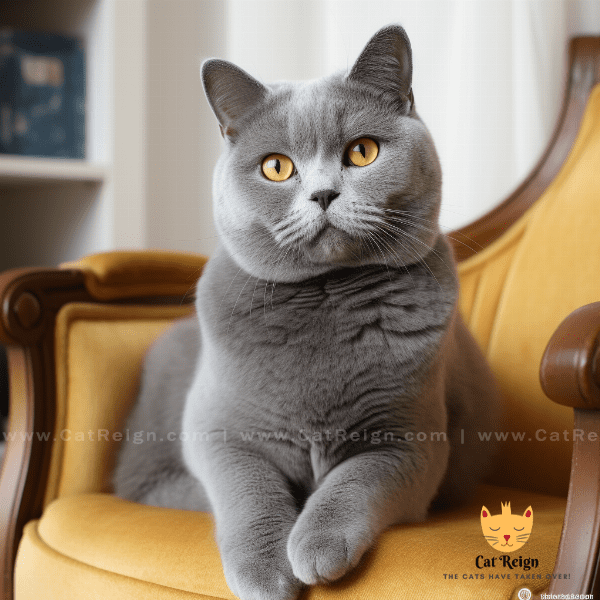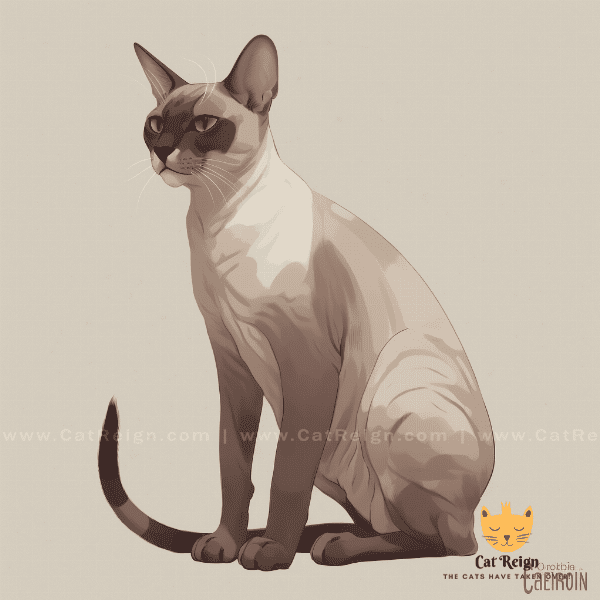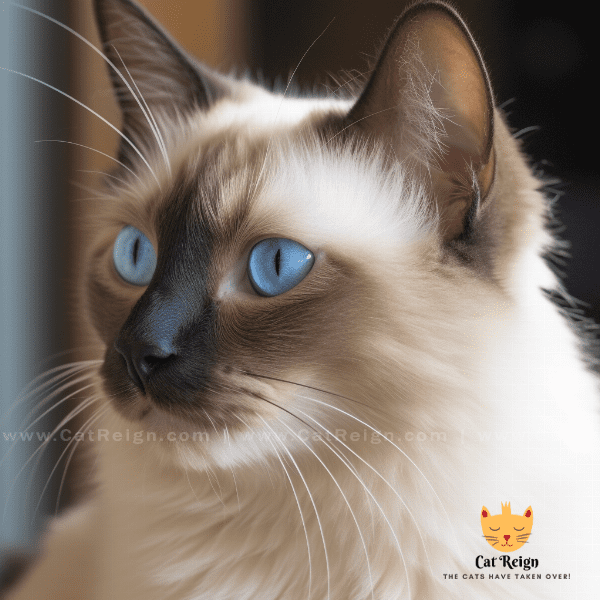Table of Contents
- History of the European Burmese Cat
- Physical Characteristics of the European Burmese Cat
- Personality Traits of the European Burmese Cat
- Caring for Your European Burmese Cat
- Common Health Issues in European Burmese Cats
- Training Your European Burmese Cat
- European Burmese Cats and Children
- European Burmese Cats and Other Pets
- Choosing the Right Food for Your European Burmese Cat
- Finding a Reputable Breeder for European Burmese Cats
History of the European Burmese Cat
The European Burmese Cat is a breed that originated in Europe and is closely related to the Burmese Cat. In the early 20th century, a group of British breeders set out to create a breed of cat with the same physical characteristics as the Burmese Cat, but with a wider range of coat colors.
Arrival in Europe
The Burmese Cat was first brought to Europe in the late 1800s, but the breed was not immediately popular. It was not until the 1940s that the breed gained widespread recognition in Europe, with the establishment of the first breeding program in France.
Development of the European Burmese Cat
In the 1950s, a group of British breeders began to work on developing a new breed of cat that would have the same physical characteristics as the Burmese Cat, but with a wider range of coat colors. The breeders crossed Burmese Cats with Siamese Cats, and the resulting offspring were then crossed back with Burmese Cats to create the European Burmese Cat.
Recognition as a Separate Breed
The European Burmese Cat was recognized as a separate breed in the 1960s, and has since become increasingly popular as a pet. The breed is known for its friendly and outgoing personality, and its ability to get along well with other pets and children.
Preservation of the Breed
In recent years, there has been concern about the preservation of the European Burmese Cat. The breed is relatively rare, and there is a risk that it could become extinct if breeding programs are not carefully managed. However, there are now a number of organizations dedicated to the preservation of the breed, and efforts are being made to ensure that the European Burmese Cat continues to thrive for years to come.
In conclusion, the history of the European Burmese Cat is an interesting and complex one. From its origins in Europe to its development as a separate breed, the European Burmese Cat has become a beloved pet for many cat lovers around the world. By learning more about the history of this unique breed, we can better understand and appreciate its special qualities and characteristics.
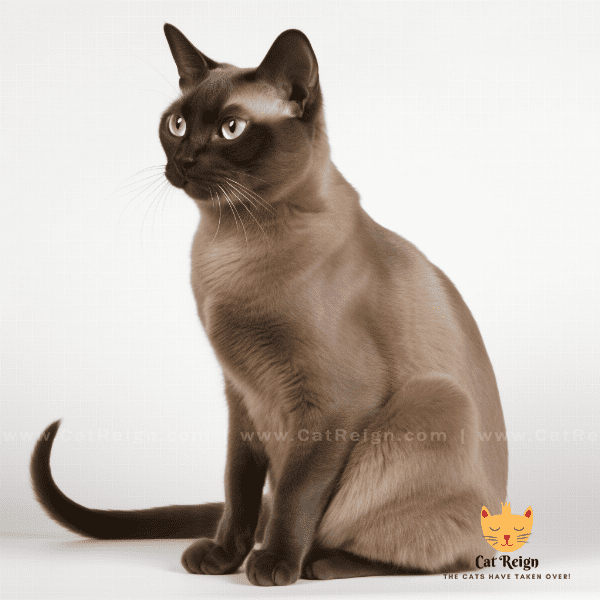
Physical Characteristics of the European Burmese Cat
The European Burmese Cat is a medium-sized cat breed that is known for its muscular build and rounded head. Here are some of the physical characteristics that set the European Burmese Cat apart:
Body Type
The European Burmese Cat has a compact, muscular body with a broad chest and strong legs. The breed is known for its sturdy build and agile movements, and is well-suited to climbing and jumping.
Coat
The European Burmese Cat has a short, shiny coat that is soft to the touch. The breed comes in a variety of coat colors, including brown, blue, chocolate, lilac, red, cream, and tortie. The coat is easy to care for and requires only occasional brushing to keep it looking its best.
Eyes
One of the most distinctive features of the European Burmese Cat is its large, expressive eyes. The eyes are usually gold or yellow in color, and are set wide apart in the cat’s face. The shape of the eyes is round and wide, giving the cat a friendly and approachable appearance.
Ears
The ears of the European Burmese Cat are medium-sized and slightly rounded at the tips. They are set wide apart on the cat’s head, and are angled slightly forward. The ears are covered in short, soft fur that matches the color of the cat’s coat.
Tail
The tail of the European Burmese Cat is medium in length and tapers to a point at the end. It is covered in short, soft fur that matches the color of the cat’s coat. The tail is often held upright when the cat is feeling playful or curious.
In conclusion, the physical characteristics of the European Burmese Cat are what make this breed so distinctive and appealing to cat lovers around the world. From its muscular build and shiny coat to its large, expressive eyes and friendly personality, the European Burmese Cat is a truly unique and special breed.
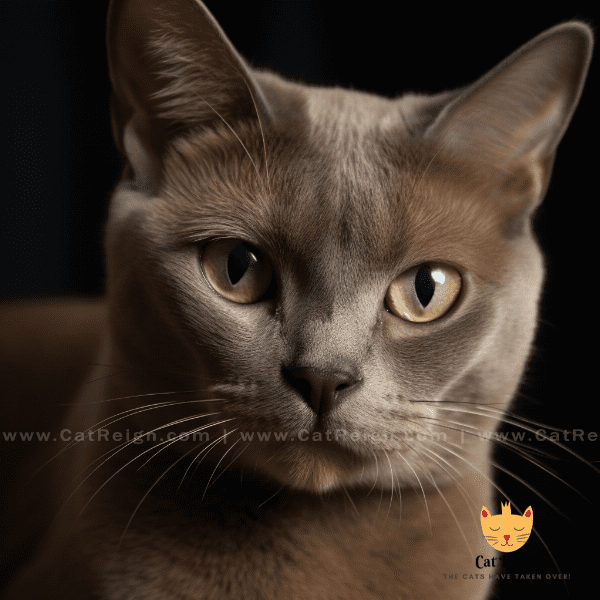
Personality Traits of the European Burmese Cat
The European Burmese Cat is known for its friendly and outgoing personality. Here are some of the personality traits that make the European Burmese Cat such a popular pet:
Playful
The European Burmese Cat is a playful breed that loves to play with toys and interact with its human family. The breed is highly intelligent and enjoys games that challenge its mind, such as puzzle toys and interactive games.
Sociable
The European Burmese Cat is a highly sociable breed that gets along well with other pets and children. The breed is known for its friendly and outgoing nature, and is often described as a “people cat” that loves to be around its human family.
Vocal
The European Burmese Cat is a highly vocal breed that loves to communicate with its human family. The breed is known for its soft, musical meow, and for its tendency to “talk” to its owners in a variety of different ways.
Loyal
The European Burmese Cat is a highly loyal breed that forms strong bonds with its human family. The breed is known for its tendency to follow its owners around the house and to be highly protective of its family members.
In conclusion, the personality traits of the European Burmese Cat are what make this breed such a beloved pet for cat lovers around the world. From its affectionate and playful nature to its sociable and vocal personality, the European Burmese Cat is a truly unique and special breed. If you’re looking for a friendly and outgoing companion that loves to be around its human family, the European Burmese Cat may be the perfect pet for you.
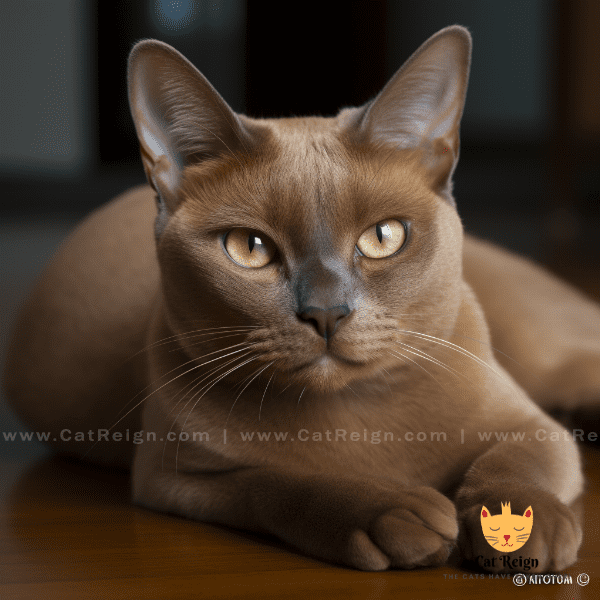
Caring for Your European Burmese Cat
Caring for a European Burmese Cat requires a little bit of effort, but the rewards of having a healthy and happy cat are well worth it. Here are some tips on how to care for your European Burmese Cat:
Grooming
The European Burmese Cat has a short, shiny coat that is easy to care for. Regular grooming, such as brushing and occasional bathing, will help keep your cat’s coat healthy and free of tangles and mats.
Nutrition
The European Burmese Cat is a relatively active breed that requires a balanced diet to maintain its health and vitality. High-quality cat food that is rich in protein and essential nutrients is recommended.
Exercise
The European Burmese Cat is an active and playful breed that requires regular exercise to stay healthy and happy. Providing your cat with toys and interactive games, as well as access to safe outdoor spaces, can help keep your cat active and engaged.
Veterinary Care
Regular veterinary care is important for maintaining your European Burmese Cat’s health. Annual check-ups, as well as regular vaccinations and parasite prevention, can help keep your cat healthy and free of illness.
Litter Box Maintenance
Proper litter box maintenance is important for keeping your European Burmese Cat’s environment clean and healthy. Litter boxes should be cleaned daily and the litter should be changed regularly to prevent odor and bacteria buildup.
In conclusion, caring for your European Burmese Cat requires a little bit of effort, but it is a small price to pay for the joy and companionship that this breed can provide. By providing your cat with proper grooming, nutrition, exercise, veterinary care, and litter box maintenance, you can ensure that your European Burmese Cat remains healthy and happy for years to come.
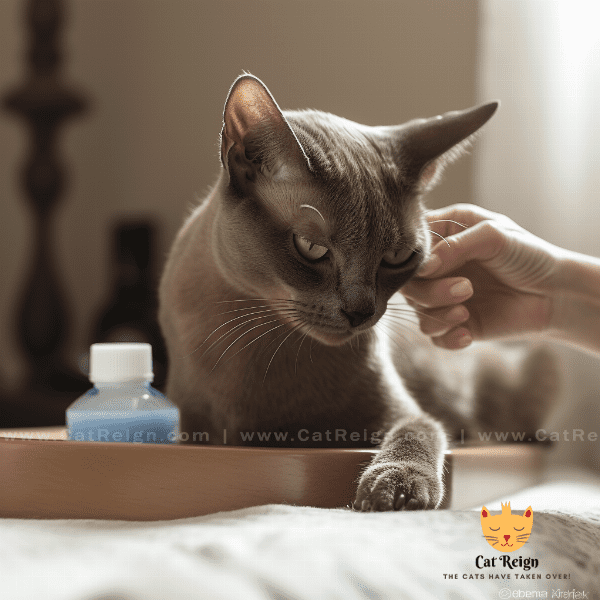
Common Health Issues in European Burmese Cats
Like all Cat breeds, the European Burmese Cat is susceptible to certain health issues. Here are some of the most common health issues that can affect the European Burmese Cat:
Hypertrophic Cardiomyopathy
Hypertrophic Cardiomyopathy is a heart condition that is relatively common in the European Burmese Cat. This condition causes the walls of the heart to thicken, making it difficult for the heart to pump blood effectively. Symptoms of Hypertrophic Cardiomyopathy may include difficulty breathing, lethargy, and fainting.
Dental Issues
European Burmese Cats are susceptible to dental issues, such as periodontal disease and tooth decay. Regular dental cleanings and check-ups can help prevent these issues and keep your cat’s teeth healthy.
Feline Lower Urinary Tract Disease
Feline Lower Urinary Tract Disease is a condition that can cause urinary tract infections, bladder stones, and other issues in cats. Symptoms may include frequent urination, straining to urinate, and blood in the urine.
Obesity
European Burmese Cats are prone to becoming overweight or obese, especially if they are not provided with enough exercise or are fed a diet that is too high in calories. Obesity can lead to a number of health issues, such as diabetes and joint problems.
Respiratory Issues
European Burmese Cats may be prone to respiratory issues, such as asthma or bronchitis. Symptoms may include coughing, wheezing, and difficulty breathing.
In conclusion, while the European Burmese Cat is generally a healthy breed, there are certain health issues that owners should be aware of. By staying vigilant and seeking veterinary care when necessary, owners can help ensure that their European Burmese Cat remains healthy and happy for years to come.
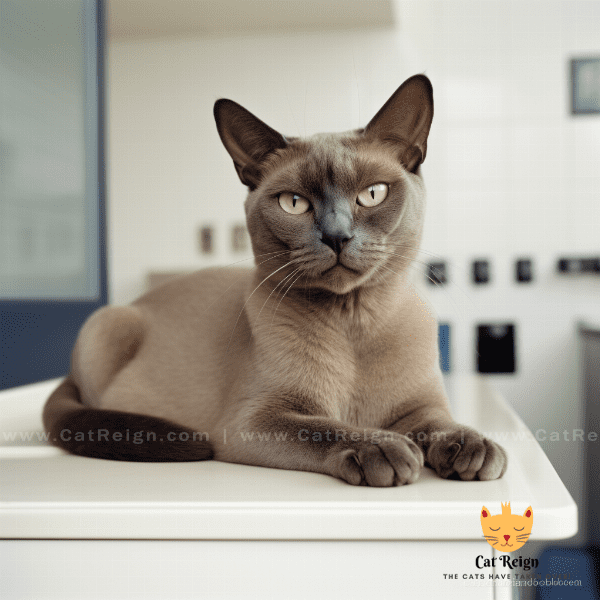
Training Your European Burmese Cat
Training your European Burmese Cat is an important part of helping your cat become a well-behaved and happy member of your family. Here are some tips on how to train your European Burmese Cat:
Positive Reinforcement
Positive reinforcement is an effective and humane training method that involves rewarding your cat for good behavior. Rewards can include treats, praise, and playtime, and should be given immediately after the desired behavior occurs.
Clicker Training
Clicker training is a type of positive reinforcement training that uses a clicker to mark desired behaviors. The clicker is a small device that makes a clicking sound when pressed, and is used to signal to your cat that it has done something right.
Litter Box Training
Litter box training is an important part of helping your European Burmese Cat learn where to go to the bathroom. To litter box train your cat, choose a quiet, secluded area of your home and provide your cat with a clean litter box filled with a high-quality, unscented litter.
Leash Training
Leash training can be a great way to give your European Burmese Cat exercise and mental stimulation while also keeping it safe. To leash train your cat, start by introducing your cat to the leash and harness gradually, and rewarding your cat with treats and praise for wearing them.
Training for Tricks
European Burmese Cats are intelligent and can be trained to perform a variety of tricks, such as sitting, shaking paws, and jumping through hoops. Training for tricks can be a fun way to bond with your cat and provide it with mental stimulation.
In conclusion, training your European Burmese Cat is an important part of helping your cat become a happy and well-behaved member of your family. By using positive reinforcement, clicker training, and other effective training methods, you can help your cat learn important skills and behaviors that will make life easier and more enjoyable for both you and your cat.
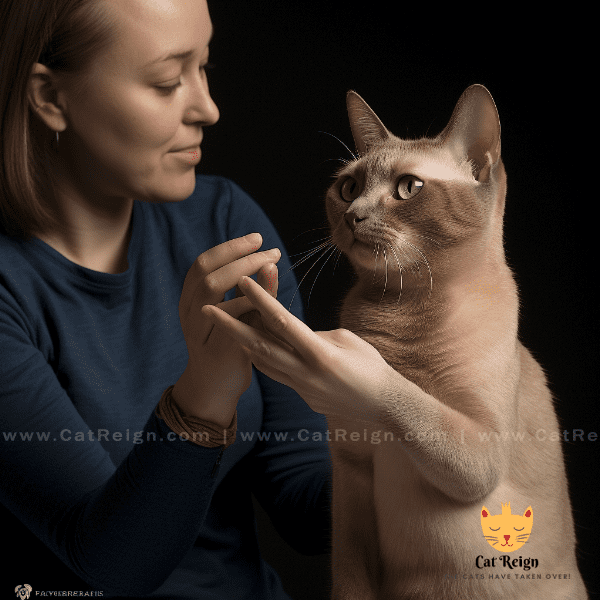
European Burmese Cats and Children
European Burmese Cats are known for their friendly and outgoing nature, and are generally great with children. Here are some things to keep in mind when introducing your European Burmese Cat to children:
Supervision
It is important to supervise interactions between children and European Burmese Cats to ensure that both the children and the cat are safe. Teach children to be gentle and respectful with the cat, and to avoid pulling its tail or ears.
Socialization
Socialization is an important part of helping your European Burmese Cat become comfortable around children. Introduce your cat to children gradually, and reward your cat with treats and praise for calm and relaxed behavior.
Playtime
Playtime can be a great way for children and European Burmese Cats to bond. Encourage children to play with the cat using toys, such as feather wands or catnip mice, and to provide the cat with plenty of exercise and mental stimulation.
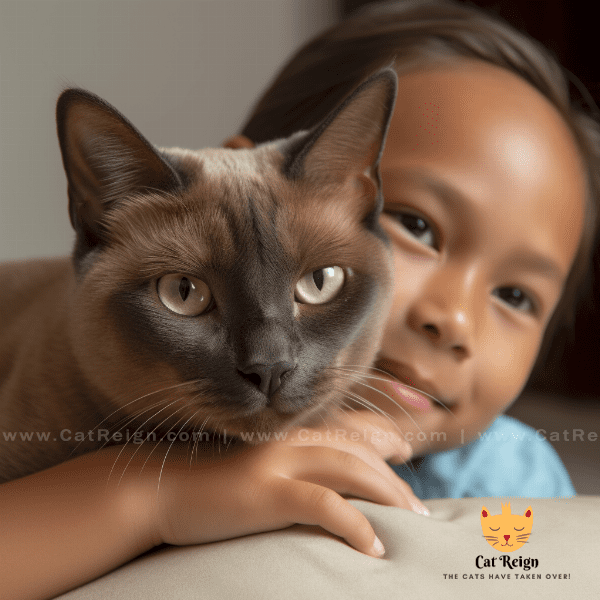
European Burmese Cats and Other Pets
European Burmese Cats are generally sociable and friendly with other pets, making them a great addition to multi-pet households. Here are some tips on how to introduce your European Burmese Cat to other pets:
Slow Introduction
It is important to introduce your European Burmese Cat to other pets slowly and gradually to avoid stress and potential conflicts. Start by allowing the pets to smell each other through a closed door, and gradually increase their interactions over time.
Supervision
It is important to supervise interactions between your European Burmese Cat and other pets to ensure that they are safe and getting along well. Keep a close eye on their interactions and separate them if any signs of aggression or stress occur.
Training can also help ensure that your European Burmese Cat and other pets get along well. Teach your cat basic obedience commands, such as “come” and “stay”, and reward it for good behavior around other pets.
Separate Spaces
Providing separate spaces for your European Burmese Cat and other pets can help prevent conflicts and reduce stress. Make sure each pet has its own food, water, and litter box, and provide plenty of toys and hiding places for each pet.
Allergies
It is important to keep in mind that some pets, including dogs and other cats, may be allergic to cats, including European Burmese Cats. If you have concerns about allergies, consult with a veterinarian before introducing a new pet into your home.
In conclusion, European Burmese Cats are generally sociable and friendly with other pets, but it is important to introduce them slowly and supervise their interactions. Training, separate spaces, and allergy considerations can also help ensure that your European Burmese Cat and other pets have a happy and harmonious relationship. By keeping these tips in mind, you can help ensure that your European Burmese Cat becomes a beloved member of your multi-pet household.
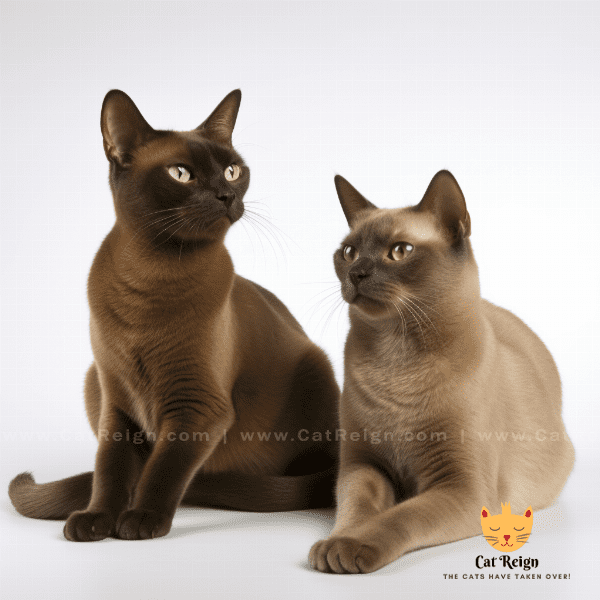
Choosing the Right Food for Your European Burmese Cat
Choosing the right food for your European Burmese Cat is an important part of maintaining its health and well-being. Here are some things to keep in mind when selecting food for your cat:
Nutritional Requirements
European Burmese Cats require a balanced and nutritious diet to maintain their health and vitality. Look for cat food that is specifically formulated for their nutritional needs, with high-quality protein and essential nutrients.
Wet vs. Dry Food
Both wet and dry food can be a good choice for European Burmese Cats, depending on their individual preferences and needs. Wet food can provide more moisture, which can be beneficial for cats with urinary tract issues, while dry food can help keep teeth clean and provide mental stimulation.
Avoiding Fillers and Additives
When selecting food for your European Burmese Cat, it is important to avoid fillers and additives that may be harmful to their health. Look for food that does not contain artificial preservatives, colors, or flavors, and avoid food with high levels of carbohydrates and fillers.
Feeding Schedule
Establishing a regular feeding schedule can help ensure that your European Burmese Cat receives the appropriate amount of food and maintains a healthy weight. Divide your cat’s daily food allowance into two or three smaller meals throughout the day.
Consult with a Veterinarian
If you have any concerns about your European Burmese Cat’s diet, consult with a veterinarian for recommendations and guidance. They can help you determine the appropriate type and amount of food for your cat’s individual needs.
In conclusion, choosing the right food for your European Burmese Cat is an important part of maintaining its health and well-being. By selecting food that meets their nutritional requirements, avoiding fillers and additives, and establishing a regular feeding schedule, you can help ensure that your cat remains healthy and happy. If you have any concerns or questions about your cat’s diet, don’t hesitate to consult with a veterinarian for guidance.
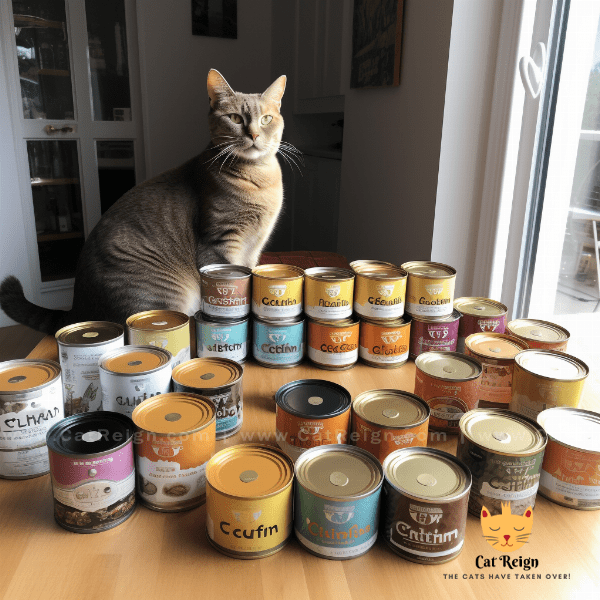
Finding a Reputable Breeder for European Burmese Cats
Finding a reputable breeder is an important step in ensuring that you get a healthy and well-bred European Burmese Cat. Here are some things to keep in mind when searching for a breeder:
Research
Research potential breeders online and read reviews from previous customers. Look for breeders who are knowledgeable and passionate about European Burmese Cats, and who prioritize the health and well-being of their cats.
Visit the Breeder
Visit the breeder’s facility and ask to see the cats and kittens. Look for clean and well-maintained living conditions, and observe the cats’ behavior and temperament. Reputable breeders will also be happy to answer any questions you may have about the breed and their breeding practices.
Health Guarantees
Make sure that the breeder offers health guarantees for their cats, and provides documentation of veterinary check-ups and vaccinations. Reputable breeders will also screen their cats for genetic health issues before breeding.
Registration and Pedigree
Make sure that the breeder provides registration papers and pedigrees for their cats, which will help ensure that your European Burmese Cat is a purebred and free from any genetic defects.
Price
While price should not be the only factor in choosing a breeder, be wary of breeders who offer cats at significantly lower prices than other breeders. High-quality European Burmese Cats are typically priced in the mid to high range.
In conclusion, finding a reputable breeder is essential in ensuring that you get a healthy and well-bred European Burmese Cat. By researching potential breeders, visiting their facilities, checking for health guarantees and registration, and being cautious of pricing, you can help ensure that you get a cat that will be a healthy and happy addition to your family.


